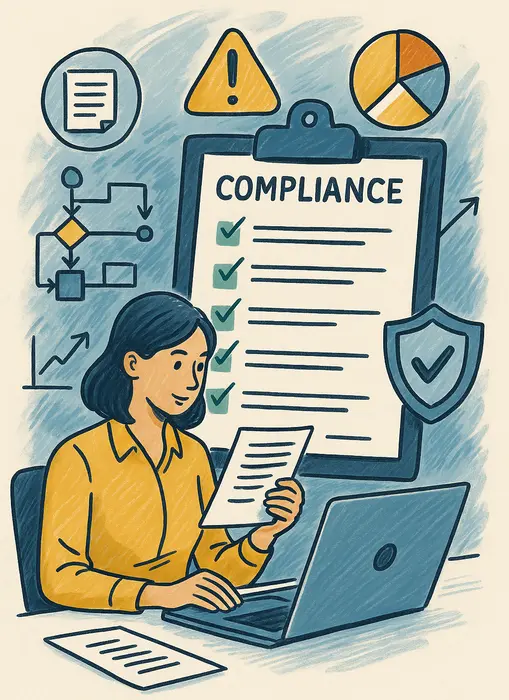Working in a highly regulated industry can feel like walking a tightrope. You need systems that support efficiency and innovation—but you can’t afford to miss a compliance detail.
In this post, we’ll explore how to build systems that are both compliant and practical. Whether you’re in healthcare, finance, education, or manufacturing, these steps will help you create robust, audit-ready processes without slowing everything down.
What Makes High-Regulation Environments Unique?
These environments are defined by:
- Strict external standards (e.g., HIPAA, GDPR, FDA, SOX)
- Frequent audits or inspections
- High penalties for non-compliance
- Detailed documentation requirements
This means your systems must be:
- Repeatable and consistent
- Transparent and well-documented
- Able to demonstrate compliance at any moment
Step-by-Step: How to Build Strong Systems in Regulated Settings
Step 1: Understand the Requirements Deeply
Start by mapping all relevant regulations. Then:
- Identify which parts apply to your specific processes
- Translate legal language into simple business rules
- Get input from legal, compliance, and operations teams
Step 2: Design for Compliance First
Ensure your system:
- Captures required data
- Stores records securely
- Follows mandated procedures
Don’t bolt compliance on later—bake it in from the beginning.
Step 3: Map the Workflow Visually
Use flowcharts or process maps to:
- Clarify each step
- Identify decision points and data handoffs
- Show where compliance checks occur
Visual maps help everyone understand and follow the process.
Step 4: Build with Traceability in Mind
Your system should make it easy to:
- Track who did what and when
- Access historical records
- Provide an audit trail without manual work
This reduces stress during audits or investigations.
Step 5: Automate What You Can (Safely)
Automation can help with:
- Data entry validation
- Routine alerts and approvals
- Document version control
But always validate automated steps against regulatory requirements.
Step 6: Train and Reinforce
Systems are only as good as the people using them:
- Provide regular, role-specific training
- Create simple SOPs
- Reinforce key behaviors in daily operations
Step 7: Monitor and Improve
Set up regular reviews to:
- Audit your own compliance
- Spot inefficiencies or breakdowns
- Update processes when regulations change
Use feedback from users and auditors to improve.
Tools That Help
- Policy management software (e.g., PowerDMS, ConvergePoint)
- Process mapping tools (e.g., Lucidchart, Miro)
- Document control systems (e.g., SharePoint, M-Files)
- Audit management platforms (e.g., LogicGate, Qualtrax)
Summary: Smart Systems Can Be Compliant Too
You don’t have to choose between compliance and usability. With thoughtful design, the right tools, and ongoing review, you can build systems that are both audit-ready and business-friendly.
Start by understanding the rules. Design with clarity. Train consistently. And treat compliance as part of how you do great work—not just a checklist.
